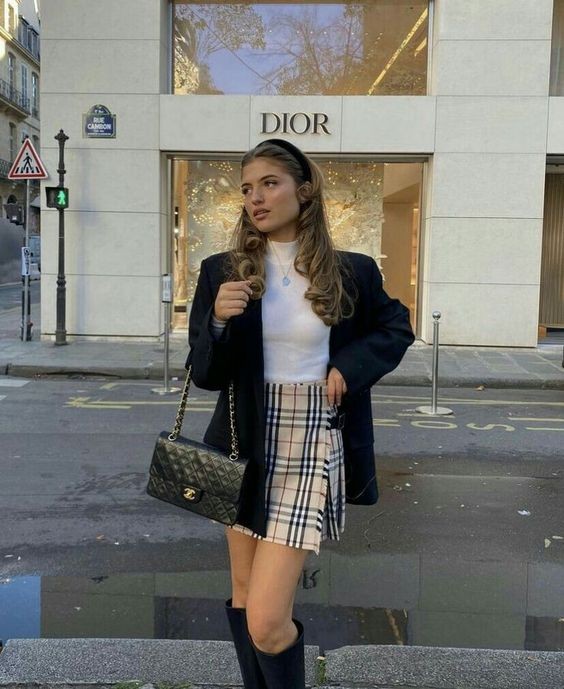The Allure of Old Money Outfits: A Deep Dive into Timeless Elegance
Introduction
The concept of "old money" refers to families and individuals who have inherited wealth over generations, often characterized by understated elegance and a reluctance to display their riches ostentatiously. This ethos extends to their fashion choices, which emphasize quality, craftsmanship, and classic styles. In this article, we will explore the characteristics, key pieces, styling tips, and cultural significance of old money outfits, providing a comprehensive guide for anyone looking to embody this sophisticated aesthetic.
Characteristics of Old Money Style
Old money fashion is marked by its subtlety and refinement. Unlike the flashiness often associated with "new money," individuals from old money backgrounds tend to prioritize a few key characteristics:
Quality Over Quantity: Old money outfits focus on high-quality materials and craftsmanship. Fabrics like cashmere, wool, silk, and fine cotton are preferred, as they age beautifully and maintain their appearance over time.
Timelessness: Styles are often classic and never go out of fashion. Think tailored suits, elegant dresses, and well-fitted coats. These pieces can be worn season after season without feeling outdated.
Understated Colors: The color palette tends to be muted and sophisticated. Earthy tones, soft pastels, and classic neutrals dominate, allowing the quality of the fabric and the cut of the garment to shine without distraction.
Attention to Detail: Old money outfits often feature intricate details, such as bespoke tailoring, hand-stitched embellishments, and unique buttons. These subtle touches add a level of sophistication that distinguishes old money style from mass-produced fashion.
Functionality: Outfits are practical and comfortable, allowing for ease of movement and versatility. The goal is to look polished without sacrificing comfort or practicality.
Key Pieces in Old Money Outfits
To achieve the old money aesthetic, certain staple pieces are essential. Here’s a closer look at some key components of this refined style:
1. Tailored Blazers
A well-fitted blazer is a cornerstone of old money outfits. Often made from high-quality wool or cashmere, a tailored blazer can be worn over dresses or paired with trousers for a polished look. Opt for classic colors such as navy, charcoal, or forest green.
2. Crisp White Shirts
A timeless white button-up shirt is a must-have. Choose one made from high-quality cotton with a tailored fit. This versatile piece can be dressed up or down, making it suitable for various occasions.
3. Cashmere Sweaters
Cashmere sweaters add warmth and sophistication to any outfit. Choose crewneck or v-neck styles in neutral tones to pair effortlessly with trousers or skirts.
4. Classic Trousers
Tailored trousers in neutral colors, such as beige, navy, or gray, are essential for creating a polished look. Look for high-waisted options that emphasize the waist and create a flattering silhouette.
5. Elegant Dresses
For women, a simple, elegant dress is a staple of old money fashion. A-line or sheath dresses in high-quality fabrics like silk or wool are ideal. Stick to classic colors and minimal prints for a timeless look.
6. Sophisticated Footwear
Footwear should be practical yet elegant. Leather loafers, classic pumps, or well-crafted oxfords complete an old money outfit beautifully. Opt for neutral shades that can easily be paired with multiple ensembles.
7. Timeless Accessories
Accessories play a crucial role in elevating an outfit. Consider investing in classic pieces such as a leather handbag, silk scarf, or a vintage watch. Jewelry should be understated, with items like pearl earrings or a simple gold necklace.
Styling Tips for Old Money Outfits
To master the art of old money styling, consider these tips:
Invest in Tailoring: Proper fit is essential. Consider having your clothes tailored to ensure they fit perfectly. This small adjustment can significantly enhance the overall look.
Mix High and Low: While the focus is on high-quality pieces, it’s possible to mix in affordable items. Look for classic silhouettes in budget-friendly materials to complement your wardrobe.
Focus on Layering: Layering is a key technique in achieving an old money aesthetic. Pair blazers with sweaters or vests for a sophisticated look, and don’t be afraid to experiment with textures.
Keep It Simple: The old money style is about subtlety. Avoid overly trendy pieces or loud patterns. Instead, choose simple, elegant items that can be easily combined.
Maintain Your Wardrobe: Take care of your clothing to ensure it lasts. Regularly clean and store your garments properly. A well-maintained wardrobe reflects an understanding of quality and care.
Cultural Significance of Old Money Style
The old money aesthetic is not just a fashion choice; it reflects a broader cultural significance. It embodies values such as restraint, sophistication, and tradition. In a world increasingly dominated by fast fashion and rapid trends, the old money style serves as a reminder of the importance of timelessness and quality.
Moreover, old money outfits often evoke a sense of heritage and identity. Many families have specific styles associated with their lineage, creating a sense of belonging and continuity. By embracing this style, individuals can connect with their roots and showcase their appreciation for tradition.
Conclusion
Old money outfits epitomize elegance, sophistication, and a deep appreciation for quality craftsmanship. By prioritizing timeless pieces, understated colors, and meticulous attention to detail, anyone can embrace this classic style. As fashion continues to evolve, the allure of old money remains, reminding us of the beauty in restraint and the enduring appeal of timeless elegance. Whether dressing for a formal event or a casual outing, incorporating elements of old money style can elevate your wardrobe and create a polished, sophisticated look.






